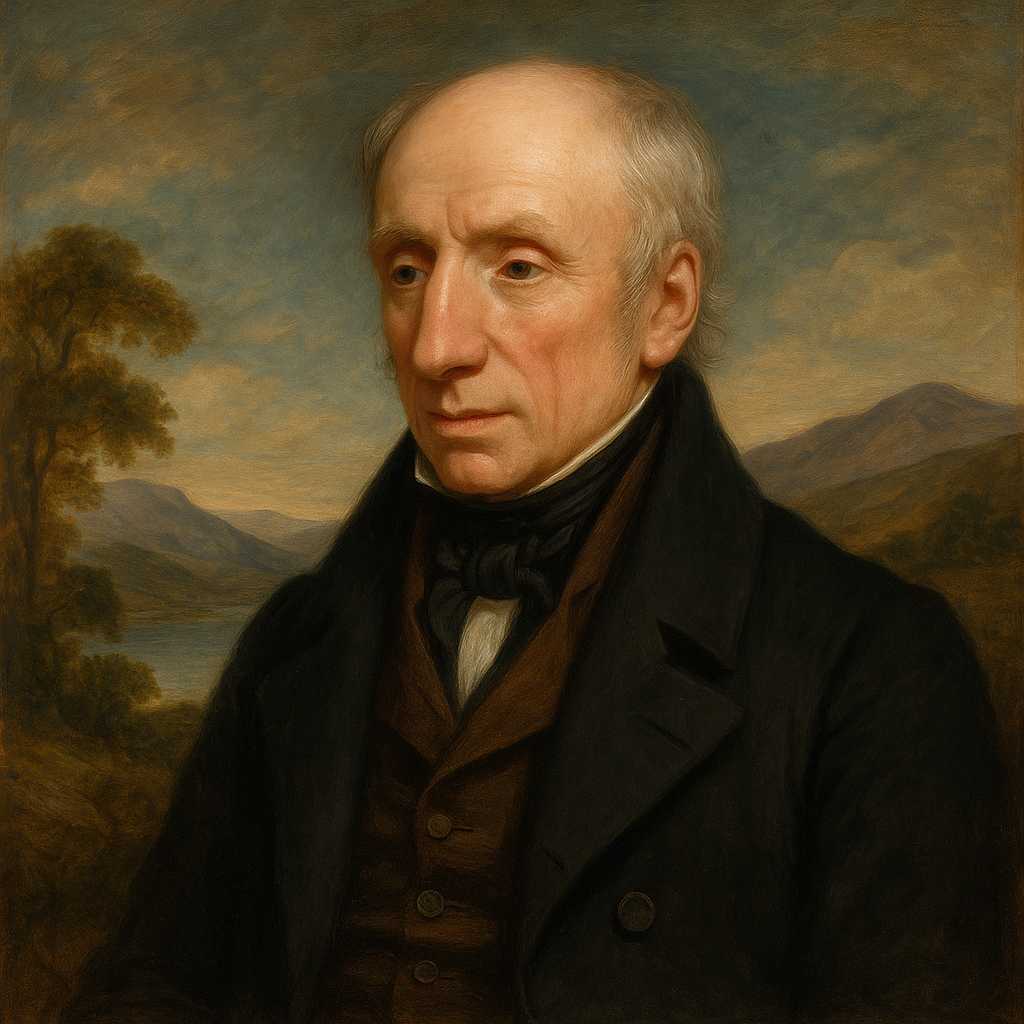A Complaint
William Wordsworth
1770 to 1850

There is a change—and I am poor;
Your love hath been, nor long ago,
A fountain at my fond heart's door,
Whose only business was to flow;
And flow it did; not taking heed
Of its own bounty, or my need.
What happy moments did I count!
Blest was I then all bliss above!
Now, for that consecrated fount
Of murmuring, sparkling, living love,
What have I? shall I dare to tell?
A comfortless and hidden well.
A well of love—it may be deep—
I trust it is,—and never dry:
What matter? if the waters sleep
In silence and obscurity.
—Such change, and at the very door
Of my fond heart, hath made me poor.
William Wordsworth's A Complaint
William Wordsworth's poem A Complaint is a poignant reflection on loss and emotional impoverishment, articulated through the metaphor of water. Written in 1807, the poem explores the transition from a time of abundant, overflowing love to one of absence and hidden reserves of affection. Its elegiac tone and controlled formal structure amplify the emotional gravity of the speaker’s lament. In this analysis, we will examine the poem’s use of metaphor, its treatment of themes such as love, change, and emotional isolation, and the structural and stylistic choices Wordsworth employs to convey these ideas.
Theme of Loss and Emotional Change
The poem’s opening line, “There is a change—and I am poor,” establishes the dual concepts of transformation and deprivation. The use of “poor” suggests not just material destitution but emotional impoverishment, foregrounding the speaker’s profound sense of loss. This emotional shift is framed through the metaphor of love as a fountain, which is central to the poem. In the past, love flowed “at my fond heart’s door,” symbolizing accessibility, vitality, and abundance. The choice of the word “fond” highlights the speaker’s deep emotional attachment to this love, emphasizing its personal significance.
However, the subsequent stanzas reveal that this once “murmuring, sparkling, living” love has become a “comfortless and hidden well.” The stark transformation from a freely flowing fountain to a concealed well underscores the emotional alienation and stagnation that the speaker feels. Wordsworth masterfully conveys the pain of this loss through the juxtaposition of the dynamic, life-affirming imagery of the fountain with the static, isolating image of the well.
Metaphor of Water
Water serves as the dominant metaphor throughout the poem, symbolizing love in its various states. The fountain represents love as active, life-giving, and unselfconscious, flowing “not taking heed / Of its own bounty, or my need.” This imagery conveys the self-sustaining and generous nature of the love the speaker once experienced. The shift to the well, however, suggests containment, isolation, and concealment. While the well “may be deep” and “never dry,” it lacks the outward vitality and accessibility of the fountain. Wordsworth’s use of “hidden” and “sleep” to describe the well reinforces its dormancy and inaccessibility, emphasizing the emotional distance between the speaker and the source of love.
The ambiguity of the well—whether it remains deep and full of potential or is ultimately barren—reflects the speaker’s uncertainty about the permanence of this emotional estrangement. This complexity imbues the poem with a profound sense of melancholy.
Tone and Emotional Resonance
Wordsworth employs a tone of quiet resignation rather than anger or despair. The rhetorical question in the second stanza, “What have I? shall I dare to tell?” suggests hesitation and vulnerability, as though the speaker is reluctant to confront the full extent of his loss. The repetition of “poor” in the final line reinforces the speaker’s diminished state, completing the circular journey from the opening line and emphasizing the enduring impact of this emotional change.
Structure and Form
The poem is composed of three sestets, with a rhyme scheme of ABABCC. This structured form mirrors the reflective and controlled tone of the poem, allowing Wordsworth to meditate on the loss with a sense of measured introspection. The use of iambic tetrameter lends a rhythmic, flowing quality to the poem, mimicking the natural motion of water. This subtle metrical choice enhances the thematic coherence, as the rhythm reinforces the imagery of love as fluid and transformative.
Conclusion
In A Complaint, Wordsworth captures the essence of love’s transformative power and the deep sorrow of its loss. Through the central metaphor of water, the poet contrasts the vitality and abundance of a once-flowing love with the stagnation and isolation of its present state. The poem’s controlled structure, evocative imagery, and reflective tone combine to create a moving meditation on emotional deprivation and the enduring impact of change. Ultimately, Wordsworth’s exploration of love and loss resonates with universal human experiences, making A Complaint a timeless work of introspection and lamentation.
This text was generated by AI and is for reference only. Learn more
Want to join the discussion? Reopen or create a unique username to comment. No personal details required!



Comments
No comments yet. Be the first to comment!